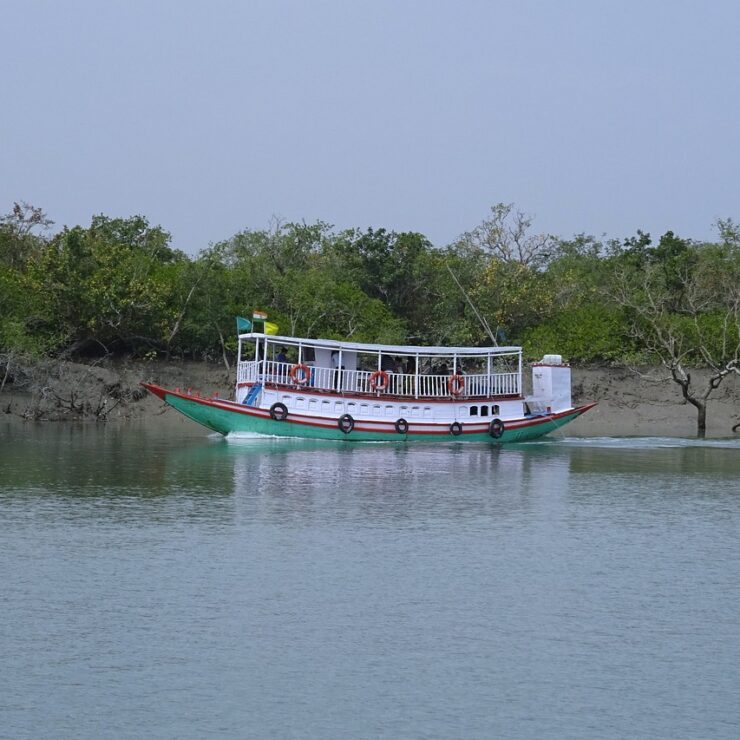The captivating Sundarbans region is a vast and mysterious area where the beauty and dangers of nature combine to create an experience of magnificent stories. A lot of people are unaware of the incredible details, such as the region’s status as a refuge for a wide variety of wildlife and why it is a genuine gold mine of other fascinating information.
The Importance of Knowing the Unknown Facts about the Sundarbans:
It’s not just the adventure that makes one explore the Sundarbans; it’s more about getting sincerely attached to this unique place and its inhabitants. While learning unknown facts about the Sundarbans, you begin to see it another way. More than being a tourist spot, it is something else.
You begin to understand its deeper story. The story is about how the plants, animals, and people have adapted to survive in this unique environment.
Knowing these details changes how you look at Sundarbans. It makes a simple trip to experience the struggle, the changes, and the importance of keeping this ecosystem healthy.
Here are twenty interesting facts about Sundarbans that will increase your knowledge and interest:
1. The World’s Largest Mangrove Forest:
With its extensive network of tidal waterways and dense mangrove thickets, Sundarbans is recognized as the world’s largest mangrove forest. The huge forest is not only a natural wonder but a crucial ecologic barrier, too. It protects inland areas from cyclones and tsunamis.
2. UNESCO World Heritage Site:
Sundarbans is acknowledged as a UNESCO Heritage Site because of its high productivity and the uniqueness of the ecosystem with exceptionally high biodiversity. This heritage recognition marks that this location has global significance, and as such, requires constant conservation for maintaining its unique natural environment.
3. Inhabited by the Royal Bengal Tiger:
The Sundarbans are famous for possessing the world’s largest population of the Royal Bengal Tigers. They are not only the symbol of wild beauty in Sundarbans but also of the critical balance between nature and the threats of extinction.
4. Complex Network of Rivers and Tidal Waterways:
The Sundarbans is quite tricky and interesting to navigate through, with its magnificent network of rivers, creeks, and tidal channels. This web of rivers makes the forest a very unique place for adventure and exploration but very tough to handle and care for.
5. Bio-shield Against Cyclones:
The mangrove forests thus act as a natural buffer, calming the anger of natural disasters before their impact reaches populated places. This barrier is very essential for the local communities who inhabit the edges of this vast forest.
6. Rich Biodiversity:
Beyond the tigers, the Sundarbans provide for an array of life that includes saltwater crocodiles, various dolphin species, and a host of bird species. This great richness of biological diversities makes Sundarbans an important zone of biological research and a potential site for wildlife enthusiasts.
7. Breathing Root Mangroves:
One of the most interesting features is the “breathing roots” of the Sundarbans mangroves. Just above the mud, above the water, the roots stick out, providing an oxygen-poor environment for breathing—what an amazing adaptation of life in this region.
8. Adaptations of Tigers:
The Sundarbans tiger has adapted itself to the aquatic environment of the landscape. Of course, swimming is very important and a nice skill to possess for survival within the vast network of waterways in the forest.
9. The Forest of Honey:
The term ‘Sundarbans’ comes from the Bengali words ‘Sundari,’ which means beautiful, and ‘ban,’ which refers to the forest filled with such beautiful mangrove trees. Therefore, it signifies the strong attachment of the regional flora to cultural identity.
10. Honey Collection:
Honey collection is an integral part of local communities’ livelihood, which involves traditional methods and is dangerous due to the presence of tigers—pointing out how complex the relationship is between locals and wildlife.
11. Endangered Species:
The Sundarbans provide a secure zone for many endangered species, including the coastal crocodile and the Indian python. It is almost a duty to protect these species to maintain the regional ecosystem.
12. Mysterious Atmosphere:
The Sundarbans’s mystery and sometimes even unpredictability are increased by the thick fog and serpentine waterways. This appeal adds to its charm, making this spot unforgettable to nature lovers who enjoy its secluded beauty.
13. Birds Paradise:
It is a paradise for bird watchers, as it accommodates hundreds of species of birds within the forest. This wide variety offers excellent scope for avian studies and birdwatching tours.
14. Protected Area:
Large parts of the Sundarbans are covered under protected areas. These areas conserve the natural environment and provide a safe place for wildlife to grow unhampered by human presence.
15. Cultural Heritage:
The Sundarbans are deeply embedded in local folklore and religious myths. Scores of temples and shrines scattered all over the area speak volumes about the holy association of the local people with this land.
16. Adaptation of Locals:
The local communities have played a pivotal role in evolving unique survival strategies in the real challenging and occasionally harsh environment of the Sundarbans. Their lifestyles are adapted to the environment both in practical and cultural terms, reflected through their unique ways of fishing and gathering honey.
17. Nocturnal Animals:
Many of the wildlife species in Sundarbans are active at night, which is an interesting layer of the forest ecosystem. This ranges from fishing cats, jungle cats, nocturnal birds, and reptiles, all coming out at night to animate the dynamism of Sundarbans. This thus becomes very interesting for those willing to try something different in the forest—both literally and figuratively.
18. Ecotourism:
Due to its ideal location for ecotourism, the Sundarbans draw a lot of tourists interested in environmentally friendly travel methods. Additionally, by lessening the negative effects of tourism on the environment and raising the standards of living among the locals, tourism in this area not only promotes exploration and enjoyment but also helps people focus on conversation. The idea behind ecotourism is to protect the natural beauty of the Sundarbans while giving the locals new economic prospects.
19. Fishing Practices:
Fishing has been an integral activity in local communities living around the Sundarbans and is done using traditional methods passed on through generations. The peculiar methods developed for fishing here are linked with the tidal patterns and ecological characteristics of the region. These practices are not related to any means of livelihood; they indeed represent the harmonious balance between people and the riverine environment of the Sundarbans. Traditionally, from July to September, everyone celebrates the Ilish Utsav festival.
20. Climate Impact:
The Sundarbans have also undergone severe challenges due to climatic change. Due to the rise in sea level and increased salinity, this delicate system is posing a threat to both the mangrove forests and species dependent on those forests. Thus, in this context, research on changes and combating other changes is quite important for the survival of this region, raising the issues of environmental awareness and action.
21. Community Support:
The other most important factor in the Sundarban’s survival has been the support of the communities. Most tourism operators and conservation programs are focused on enhancing the living standards of these communities and providing them with education and alternative environmentally sustainable livelihoods.
Through the spending on guides, craftsmen, and other services, tourists are directly contributing to the local economy and supporting the cultural heritage and natural environment preservation in this part of the Sundarbans. For More details:
Read More: –
Ilish Utsav 2024: A Grand Celebration in Sundarbans with Solitary Nook
8 Reasons to Visit the Sundarbans During the Durga Puja Vacation
Visit the Sundarbans with Solitary Nook:
Specifically designed tours by Solitary Nook will let you have a view and feel of the natural beauty and rich culture of the Sundarbans. We handle every aspect of your journey to guarantee your comfort and safety as you explore this magnificent forest. We will tailor our tours to your interests so that you can have a truly unique experience. When you travel with us, you can learn more about the mysteries and wonders of the Sundarbans. Our knowledgeable guides will be with you every step of the journey. They will share stories that make the trees, animals, and rivers come alive right in front of you. They are conversant with all the information regarding the forest and its history. It’s a journey into the heart of the Sundarbans, not just a visit. We can take care of everything. We can arrange for your lodging and transportation.
You’ll be able to fully relax and enjoy this adventure without worrying about anything at all in this way. We can help you explore the area’s distinctive wildlife, get a taste of the local way of life, or just enjoy the magnificent scenery. Experience Sundarbans in comfort, safety, and wonder at Solitary Nook. Let us create lifelong memories in this land of magic.
Conclusion:
Journey to the Sundarbans and see this natural beauty with newer eyes. Book your journey with Solitary Nook to uncover the secrets of one of the most mystifying places on earth.
FAQs:
What can be the best time to visit the Sundarbans?
A: November to February is the best period to visit the Sundarbans as it is comparatively less hot and more congenial for visits.
Are there any special precautions that one should take while visiting the Sundarbans?
A: Yes, follow the instructions of guides; wear comfortable clothes and mosquito repellent; and be prepared for the tropical climate amidst dense mangroves.
How can tourism help in the conservation of Sundarbans?
A. Tourists can select ecotourism circuits, follow wildlife viewing codes of conduct, and patronize local handicrafts and products that inspire and promote sustainable livelihoods.





